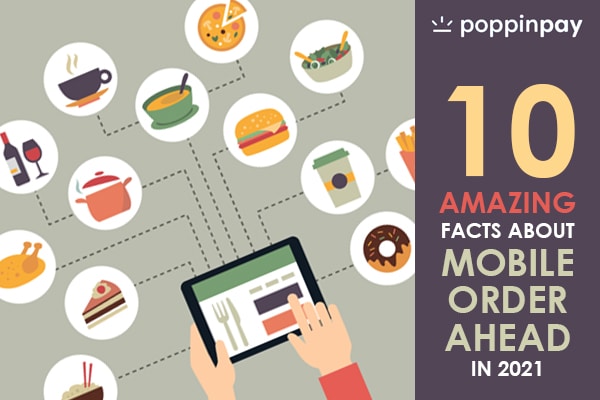Even before the COVID-19 pandemic, retailers and quick service restaurants (QSRs) were exploring new digital options to better serve their customers. Mobile order ahead is one example, giving buyers the option to call in their purchases ahead of time for the sake of convenience. But in light of the pandemic, options like mobile order ahead have taken on a whole new significance.
In the era of social distancing, solutions like mobile order ahead aren’t mere convenience tools; they’re service options that can help protect customers from germs, expand a QSRs service offerings, and overall, work towards an ordering system that’s quick and safe, even during a pandemic.
Companies who deployed a mobile order ahead solution pre-pandemic were in better shape than some to weather the storm. For these retailers, customers knew the option was available and the investment was already made, making it easy to get users on board. But even if you haven’t yet explored a mobile order ahead solution, it’s not too late. Mobile order ahead is booming in popularity in 2020, and we expect the same for the coming year.
Here are 10 amazing facts about mobile order ahead that detail its current role in the QSR ecosystem and its future in 2021.
1. Online Orders From Food Chains Have Increased 225% Since the Beginning of the Pandemic
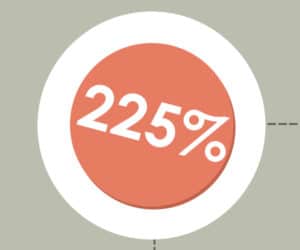
The COVID-19 pandemic is set to produce long-lasting changes on consumer behavior, and we’re already seeing the effects. Survey results show a big jump in the volume of online food transactions from both restaurants and fast casual chains since pandemic lockdowns began: Restaurant transactions have increased by 134%, and orders from food chain QSRs have jumped 225%.
It’s not hard to see why. The pandemic is changing the way consumers consider service and what priorities they have when ordering. Pre-pandemic, nobody paid a second thought to standing shoulder-to-shoulder in line with others. But now, and for the foreseeable future, social distancing is the name of the game – and with it, remote ordering options that minimize customer contact as much as possible.
From curbside pickup to contactless delivery, there are plenty of safe ordering strategies out there. But mobile order ahead represents one of the more useful ones for QSRs, as it’s more than just a pandemic-related adjustment. Mobile order ahead solutions, when integrated with your Square ecosystem, offer plenty of new marketing opportunities for vendors, all of which can be deployed and managed remotely. Overall, it’s a great way to support customers who prefer to do their ordering without in-person contact.
2. 88% of Consumers Are Using Mobile Apps to Order Food, Groceries, and Other Products the Same Amount, or Even More Often, Than They Were Before
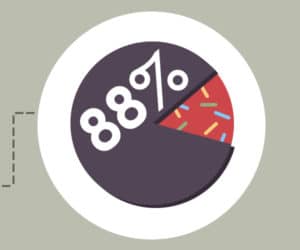
It makes sense that customers would prefer online ordering options in 2020, but according to a restaurant trend study conducted by Bluedot, mobile apps in particular are benefitting. The data shows steady increases in mobile app adoption for food and grocery orders across the year.
During Bluedot’s first study back in April, 85% of consumers agreed they were using mobile apps more often for food-related purchases. Flash forward three months to August, and the number rises to 88%.
This indicates that, as the pandemic progressed through the summer, consumers grew hungry for simple and safe ordering options that let them support their favorite restaurants without in-person contact. The report notes that many of these new adopters were users who had previously reported using apps less frequently – indicating another shift in pandemic-related thinking. Even those who avoided mobile apps in the past are starting to come around, which is great news for QSRs who make their mobile ordering experiences a priority.
3. 71% of Consumers Agree That Order Ahead Options Have Either “Some” Impact or a “Large” Impact on Restaurant Selection
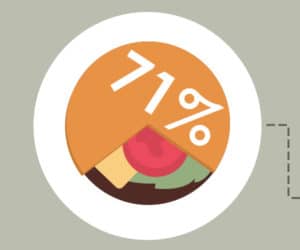
So far, we’ve seen data related to the growing preference for online ordering as well as app-based ordering. Here, we can see a third trend: Customers prioritize restaurants that allow them to order in advance. According to the data, 71% of consumers agree that even having the option to order ahead can have a moderate-to-large impact on their restaurant choice.
This is big for retailers with dedicated mobile order ahead applications. One of the most challenging aspects of the pandemic for QSRs is the drastic downturn in revenue the industry has experienced since quarantines began. According to RBO, restaurants lost $120 billion in sales in the first three months of the pandemic alone, with many operators posing rather bleak projections of remaining unprofitable through the end of the year. Given the razor-thin margins some restaurants work with, this type of decline is tough to swallow. But that’s why solutions like mobile order ahead are so useful for fighting back.
Regaining market share in the QSR space is a function of competitive differentiation and convenience. Restaurants needs to make their value clear to customers and offer a simple, frictionless experience should they choose to order. According to the above data, ordering ahead options represent our point of differentiation, earning the attention of many customers who might not consider you otherwise. And when combined with phone-based applications that enable mobile order ahead solutions, you have the convenience angle locked down as well. When customers want to order in advance, you can’t beat the ease of a mobile app.
Plus, Bluedot’s above research shows that app customers have a notably higher customer lifetime value rate than those who avoid mobile ordering. Taken together, it’s clear that a mobile order ahead solution can drive significant revenue for your QSR when you need it most.
4. 66% of Customers Have Chosen a Restaurant Specifically Because They Offer a Mobile Order Ahead Option
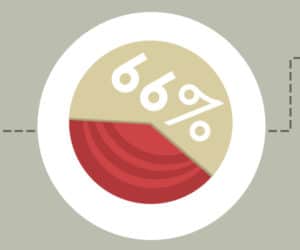
To briefly recap our above three points, we’ve learned three things so far from our data:
- Online orders are increasing
- Mobile ordering is increasing
- Order ahead options drive business
With this in mind, we can bring everything together under the umbrella of mobile order ahead. Even back in 2017, a majority (66%) of customers chose to patronize a restaurant specifically because they offered a mobile order ahead solution. And while the landscape looks a little different in 2020, we can reasonably assume, based on our above trend analyses, that mobile order ahead is the way things are moving.
When you look at the benefits of mobile order ahead, it’s easy to see why so many customers prefer it. You can browse the menu at your leisure without employees watching you or holding up a queue. You also can handle payments entirely in-app. It is very easy to leverage loyalty points and promotions as well. In some cases, you can even skip the line when you arrive. And of course, in the era of social distancing, you can handle the majority of the ordering process without needing to be around others.
All in all, it’s a more efficient system of ordering that customers learn to love – and when they do, it drives their continued business over time.
5. 81% of Customers Believe That Drive-Through Wait Times of 10+ Minutes Are Too Long
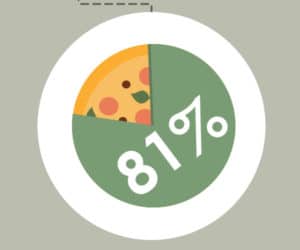
Just how “quick” do quick service restaurants need to be? Looking at Bluedot’s survey data as a benchmark, 81% customers will feel frustrated if they have to wait 10 minutes or more at the drive-through.
Call them pushy or call them entitled, but the fact of the matter is that the customer is (usually) right. If a QSR can’t live up to its name, customers will go elsewhere. In today’s economic climate, companies need all the business they can get – which makes wait time reduction the order of the day.
And on that score, mobile order ahead comes to the rescue. It’s far easier to manage large order queues when employees have digital orders in hand and know what to expect from each vehicle. Items can be made together and delivered quicker, moving cars through the line at speed. It also helps employees manage those nasty-surprise large orders that tend to clog up the queue. (Courteous customers call in large orders ahead of time, but not all of them do.)
If even a few of these customers leverage a mobile order ahead app to manage their orders, employees will be able to prep accordingly and tackle the orders head on with no surprises. This is an easy way to reduce wait times at the drive-through and boost throughput all at once.
6. 26% of Starbucks Mobile App Users Leverage Its Mobile Order Ahead Features
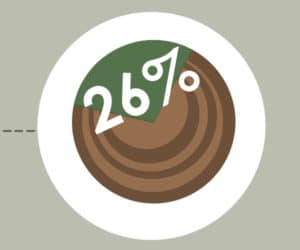
And speaking of using mobile order ahead to manage high-volume queues, did you know that a full 26% of Starbucks mobile app customers use its mobile order ahead features? This may not seem like a lot until you consider just how huge Starbucks’ market share and total app adoption is compared to other QSRs.
As of Q1 2020, Starbucks boasted an impressive $7.1 billion in revenue and a total 18.9 million active Starbucks Rewards members in the U.S. alone. There are plenty of reasons for the company’s success, but part of it is certainly Starbucks’ role as one of the world’s leading mobile payment providers in the QSR space.
Starbucks got in on the mobile ordering trend early and has spent years refining its strategy and system to support ongoing growth. Other companies can take a page out of their book by exploring what kinds of payment options may produce similar benefits in their own enterprises.
7. 38% of Buyers Perceive Drive-Through Service as Safer Than In-Store/Curbside Pickup
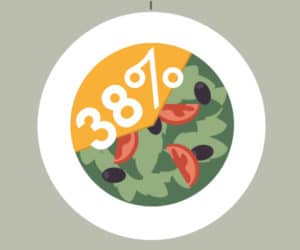
Bluedot’s survey had another interesting insight to share: In terms of pandemic safety, 38% of customers perceived drive-throughs to be significantly safer than either in-store ordering or curbside pickup.
This is another point in favor of queue management and the mobile ordering solutions that boost throughput. Thanks to the pandemic, stores have seen significant increases in drive-through volume and decreased in-store foot traffic. It all comes down to safety. Customers want to enjoy their favorite food options, but not at the risk of their health.
Mobile order ahead tools facilitate a hands-off ordering process where customer contact with employees is limited to the exchange of food. All ordering details, payments, and promotions can be handled in the application. For customers concerned about safety, this type of approach can go a long way in earning their continued business.
8. 62% of Customers Have Used Curbside Pickup the Same Amount, or More Often, Than in Previous Months
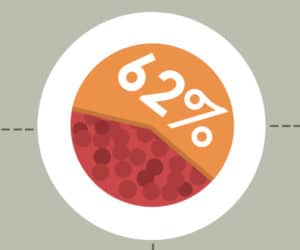
Our last insight from Bluedot’s survey relates to curbside pickup. Although considered less safe than drive-through, data shows that curbside pickup rates increased slightly from spring to summer 2020. This shows that health-conscious customers will still leverage the health-centric ordering options that QSRs put out. This trend speaks to usage and adoption rates of solutions like mobile order ahead.
When customers have the option to handle as much of their transaction off-site as possible, they’ll be more likely to give your restaurant a chance (compared to restaurants that don’t prioritize these services, at the very least). Keep this in mind as you consider your mobile app strategy and the investments you make in these digital tools.
9. 38% of Customers Will Curtail Restaurant Spending After the Pandemic
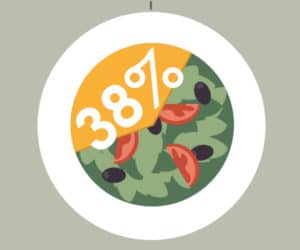
As we move closer to 2021, customers and QSRs alike may wonder which long-term behavior shifts will take hold. And while it’s hard to say for sure, it’s clear that finances will be a priority. Survey data shows that many consumers (38%) will look to cut costs by reducing the amount of money they spend on restaurants.
It makes sense, given the tough economic conditions we’re in. People have lost their jobs and face uncertain futures – it stands to reason that expensive restaurant takeout would be a prime area for cost savings. QSRs can’t fight this trend. Instead, they should embrace it.
QSRs should leverage their marketing and promotion systems to better understand what options consumers want to see and what might drive their business over time. This may include reworking your loyalty programs, providing free points towards discounts, or leveraging personalized in-app offers that encourage buyers to visit, even if those visits are less frequent.
What’s most important is that QSRs have a structured, formalized system in place to track this data and adjust their promotions accordingly. Unfortunately…
10. Only 25% of QSRs Operate With Formal Digital Strategies
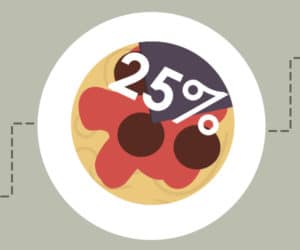
With all of the above in mind, we close on one final insight provided by PYMNTS.com: A mere 25% of QSRs operate with formal digital strategies. This leaves 75% of QSRs to scrape together digital tools and try to get in on the action without having a formalized plan in place.
Given the above insights, it’s clear that QSRs could benefit from a structured digital strategy that helps bring in customers and allow those customers to order on their own terms. And since so few companies are doing it, there’s a market opportunity here that savvy QSRs and retailers can take advantage of. This is particularly true as we move forward with pandemic-related restrictions in 2021. With in-store traffic at an all-time low, companies must explore new solutions that let them compete with their rivals and continue to offer the same level of service that their customers have come to expect.
Get a Branded Mobile Order Ahead App in Your Business
Issues surrounding COVID-19 have accelerated business processes of all kinds, and mobile order ahead is no exception. If nothing else, the pandemic has shown us that change doesn’t always occur at our own pace. Sometimes, we’re forced to adapt. And the companies who embrace the change and stay flexible in their approach will always do better than those who resist the tide. If you’re a Square user in the QSR space, we recommend contacting PoppinPay for more information about the benefits of a branded mobile order ahead app for your company. You might be surprised at how your customers respond!

